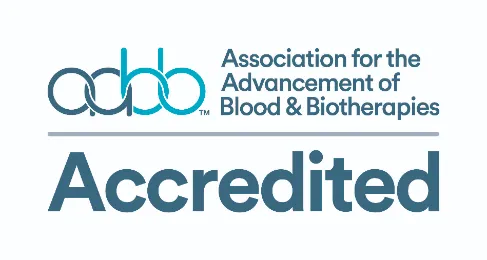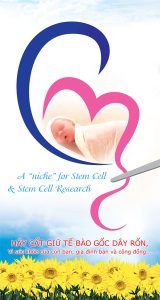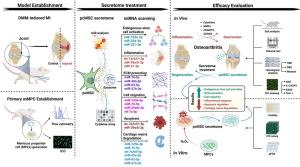Stem Cell Res Ther, 08/10/2025
According to a recent publication in Stem Cell Research & Therapy (2025), scientists Mahmood S. Choudhery và Akihiro Umezawa suggest that stem cells are entering a new era: not only as research tools but also as “biological drugs” – a form of medicine capable of self-adaptation, self-repair, and promoting the body’s own healing. Therefore, stem cells can be regarded as “living biological drugs” – medicines that can self-regulate, self-organize, and interact with the patient’s body at a biological level deeper than any conventional pharmaceutical compound.
Hematopoietic stem cell transplantation (HSCT) is considered the most classic and successful example of cell therapy. The effectiveness of this method relies on the unique ability of donor-derived stem cells to engraft, self-renew, and reconstitute the immune and hematopoietic systems after the patient undergoes intensive conditioning treatments (such as chemotherapy or radiotherapy). In addition, the epidermal cell sheet represents one of the oldest and most widely used applications of regenerative medicine. In the treatment of burns, vitiligo, genetic skin disorders, and injuries, autologous or allogeneic epidermal cell sheets are applied to cover wounds, reduce infection risks, and promote skin regeneration. The success of this approach depends on the cells’ ability to adhere, proliferate, and integrate with the host tissue. Decades of clinical experience have confirmed the therapeutic potential of this method, while also emphasizing the need for strict manufacturing procedures, consistent quality control, and long-term safety monitoring. Consequently, cell therapy shares a unifying principle: its success depends on the ability to replicate or harness the natural behaviors of stem cells within the body — including engraftment, proliferation, and differentiation.
Recently, it has been discovered that stem cell transplantation not only serves to replace damaged tissue structures but also exerts therapeutic effects through paracrine signaling and the modulation of inflammatory and immune responses. In the future, to truly realize the vast potential of regenerative medicine, research must address several remaining challenges — including ensuring safety, achieving large-scale manufacturing, managing immune compatibility, and optimizing cell production processes. Only then can cell-based medicine fully unleash its transformative power — bridging the gap from the laboratory to the patient’s bedside.
“Stem cell research and therapy” brings new hope to patients suffering from diseases that conventional medicine has yet to cure. These include neurodegenerative disorders such as Alzheimer’s and Parkinson’s diseases; chronic organ failure such as heart failure and liver cirrhosis; complex autoimmune diseases like multiple sclerosis and scleroderma; pediatric conditions such as cerebral palsy, autism spectrum disorders, and spinal muscular atrophy; age-related degenerative diseases such as osteoarthritis; and various rare genetic disorders. These conditions remain persistent challenges for global healthcare systems, imposing a tremendous emotional, physical, and financial burden on patients and their families. As the global population continues to age rapidly, the prevalence of chronic diseases is rising, placing increasing pressure on both individuals and healthcare infrastructures. In response to these challenges, stem cell therapy and regenerative medicine have emerged as some of the most promising approaches in modern medicine. Stem cell–based therapies hold the potential to repair, replace, or regenerate damaged tissues, thereby restoring normal physiological functions at the cellular level—something that traditional treatments have not yet been able to achieve.
Unlike traditional drugs—typically composed of chemical compounds or synthetic biologics—stem cells are directly derived from living tissues and administered into the patient’s body as viable, functional cells. The effects of conventional drugs are often temporary, whereas stem cells can integrate into damaged tissues or organs, leading to more sustained therapeutic outcomes. A typical drug’s life cycle includes four stages: absorption (entry into the bloodstream), distribution (delivery to target tissues), metabolism (breakdown, mainly in the liver), and excretion (elimination from the body). In contrast, stem cells are not easily cleared. Once transplanted, they tend to migrate toward injury sites—a phenomenon known as homing—and integrate into target tissues, where they actively participate in repairing and regenerating the damaged areas (Figure 1). However, in some cases, it has also been observed that stem cells do not remain long at the injury site. Instead, they may exert temporary or indirect effects through paracrine mechanisms—that is, by secreting signaling molecules that regulate the activity of surrounding cells within the damaged tissue.
Stem cells possess a unique ability to sense signals from damaged or diseased tissues, respond to environmental cues, and adapt to the biological microenvironment in which they reside. Their therapeutic effects are exerted through multiple coordinated mechanisms, including: differentiation into specialized cell types; paracrine signaling; immune modulation; migration and homing to injured sites; integration into damaged tissues; as well as anti-apoptotic and anti-fibrotic actions.
Table 1. Various mechanisms by which stem cells exert their therapeutic effects
| Mechanism | Primary function | Example of diseases |
| Differentiation | Replace lost or damaged cells in organs | Parkinson’s, spinal cord injury, osteoarthritis |
| Paracrine signaling | Promote healing and repair through secreted factors | Heart failure, wound healing |
| Immunomodulation | Control autoimmune and inflammatory responses | Multiple sclerosis, Crohn’s disease |
| Homing & Migration | Travel to site of injury | Rheumatoid arthritis, stroke |
| Engraftment & Integration | Functional integration into tissue | Retinal diseases, diabetes |
| Anti-apoptotic & Anti-fibrotic | Reduce cell death and scarring | Liver disease, pulmonary fibrosis |
Recently, studies have shown that patients with multiple sclerosis who do not respond to conventional therapies can be treated with hematopoietic stem cell therapy (HSCT). Transplantation of HSCs helps “reset” the patient’s immune system, preventing disease progression and even partially reversing neurological damage.
In the treatment of diabetes, scientists are exploring the use of stem cells to generate insulin-producing β cells, opening the possibility of freeing patients from lifelong insulin injections. Several biotechnology companies have conducted clinical trials using encapsulated β cells, and the initial results are highly promising, demonstrating the potential for long-term, stable insulin production.
In the field of cardiology, stem cell injection for patients with heart failure is being investigated as a means to restore damaged myocardial tissue, which was once considered non-regenerative. Studies have reported that following this therapy, cardiac function improves, scar tissue area decreases, and patients experience a significant enhancement in quality of life.
In addition, dopaminergic neuron transplantation therapy derived from pluripotent stem cells is offering new hope for patients with Parkinson’s disease. Early-phase clinical trials in Europe and Japan have shown improvements in motor function and restoration of dopaminergic activity in the brain, opening up promising prospects for long-term disease control.
For osteoarthritis—a common degenerative condition among the elderly—mesenchymal stem cell (MSC) injection therapy is being investigated as a way to reduce inflammation and stimulate cartilage regeneration, offering a less invasive alternative to joint replacement surgery. Early results from stem cell–based clinical trials are not only encouraging but also potentially groundbreaking, although further studies are still required before the therapy can be widely adopted in clinical practice.
Data from both preclinical and clinical studies indicate that stem cell therapy holds great promise in improving organ function and enhancing patients’ quality of life. However, the application of stem cells as living drugs still faces numerous limitations and challenges, including ethical concerns, legal and regulatory barriers, immune rejection, and the risk of uncontrolled cell proliferation that may lead to tumor formation. Other challenges include lack of standardization in manufacturing and quality control processes, difficulties in cell delivery methods, and uncertainties regarding long-term safety. Furthermore, the functional properties of stem cells can vary significantly depending on several factors: the tissue source, the age and health status of the donor, and the culture and differentiation protocols.
Stem cell–based therapies bring both hope and concern, as it remains difficult to draw definitive conclusions about their safety and efficacy. Moreover, global access to stem cell therapies is still highly uneven, making it essential to develop equitable distribution strategies and strengthen international collaboration to ensure that all countries can benefit from the advances of regenerative medicine. Despite the challenges, stem cells remain one of the most promising frontiers in modern medicine. The list of diseases once considered “incurable” is growing shorter—thanks to continuous discoveries and breakthroughs in stem cell research. Stem cells not only have the potential to extend and enhance the quality of life, but also to transform the way humans understand, approach, and make decisions about disease treatment. Instead of merely managing symptoms, stem cells aim to treat diseases at their root, actively promoting the repair and regeneration of damaged tissues and organs. Therefore, stem cell research and applications are regarded as the future of personalized, targeted, and potentially curative therapies—allowing people everywhere to benefit from the transformative power of stem cell medicine.
References
Source: Choudhery, M.S., Umezawa, A. (2025). Stem cells as biological drugs for incurable diseases. Stem Cell Res Ther 16, 482.
Link: https://stemcellres.biomedcentral.com/articles/10.1186/s13287-025-04632-8#citeas







